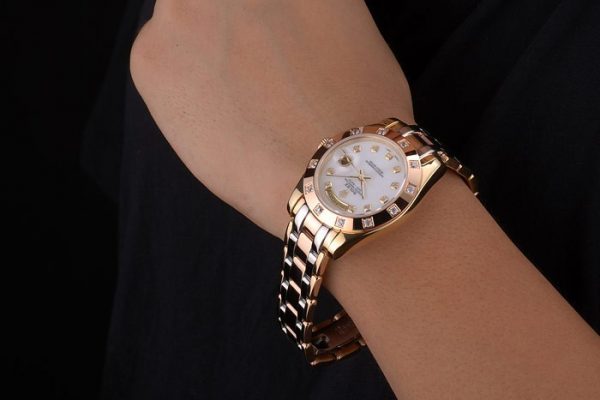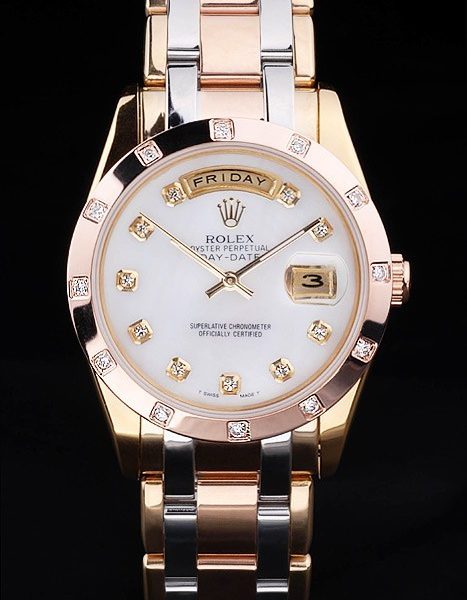Replica Rolex GMT-Master II “Pepsi” Ref. 126710 BLRO
Coke or Pepsi? It’s a matter of taste, some say, and individual tastes always differ. But there’s only one right answer if you’re talking about the replica Rolex GMT-Master. Although the manufacturer made a version that had a GMT bezel in red and black, called “Coke,” the first GMT-Master from 1955 bore the red-and-blue scale for the 24-hour display and was nicknamed “Pepsi.” The Pepsi GMT-Master II represents the reincarnation of the classic in its original form. 
Initially, the colors were used to distinguish between day and night times of the second time zone. This and other specifications for the watch came from Pan American Airways, at whose request this model was created. At the time, new jet airliners made intercontinental flights shorter and more popular, increasing the demand for watches with a second time zone. In addition to its association with pilots’ watches, the high level of recognition of the colored bezel contributed to the GMT-Master’s popularity.
Rolex cautiously modified the Pepsi until 2007. However, with the introduction of a ceramic bezel on steel versions of the GMT-Master II, the Pepsi had to be shelved. At that time, a two-color bezel made of ceramic appeared technically impossible, and creating a satisfactory red color in this high-tech material was a challenge. In 2013, Rolex solved one of these problems with the first two-tone ceramic scale – in blue and black, known as the “Batman.” In 2014, Rolex successfully created the desired red color, reintroducing the beloved red-and-blue Pepsi bezel on a white-gold watch. However, the price of over $40,000 made it inaccessible for many fans of steel Rolex sports watches. In 2018, Rolex responded to its customers’ desires and reissued the Pepsi in steel.
To distinguish it from the more expensive white-gold Pepsi, the steel Pepsi is the first Rolex sports watch with a five-piece-link Jubilee bracelet, previously reserved for Datejust models. However, whether this is a consolation to owners of the white-gold version is debatable, as the multi-linked Jubilee bracelet offers a more elegant appearance than the three-row Oyster bracelet. 
Rolex developed the Jubilee bracelet in 1945 for the Datejust, and the GMT-Master has been available with this bracelet option since 1959. Unlike the fake Rolex Datejust, the Jubilee bracelet for the GMT-Master II does not have the Oysterclasp folding clasp but instead uses the Oysterlock folding clasp, typical for sports models, with an additional safety bar. The clasps look very similar and offer the Easylink extension piece that can lengthen the bracelet by 5 mm, practical for fluctuations in wrist size due to temperature or activity changes.
The high-quality clasp on the Jubilee bracelet comes very close to optimum in terms of workmanship and operation. The safety folding bar is barely noticeable when closed, and opening it reveals a lever that is easy to raise to open the bracelet. The winding crown is also simple to use, requiring unscrewing to wind the watch. In the first pulled-out position, the primary hour hand can be adjusted forward or back in hour increments to set a second time zone, with the date advancing accordingly. In the second position, the minutes hand can be adjusted, along with the 24-hour and primary hour hands, making it ideal for travelers.
Upon its launch in 1955, the Pepsi’s bezel was made of Plexiglas with the red-and-blue color and white track printed on the underside. From 1959 to 2007, Rolex produced the bezel in aluminum with colors created using an anodizing process. This was followed by a zirconium-oxide ceramic track, and after years of research, Rolex returned to ceramic with an aluminum-oxide basis, adding chromium oxide, magnesium oxide, and a rare earth oxide for the red ceramic bezel. For the blue color, half of the bezel is impregnated with a metallic salt solution before the sintering process. Sintering at 1,600 degrees Celsius for more than 24 hours results in the final colors.
In contrast to the white-gold Pepsi and all previous GMT-Master II 126710 models, this version is the first to use the new Caliber 3285, offering a 70-hour power reserve instead of 48 hours. Rolex has improved the movement consistently, maintaining core virtues of accuracy, longevity, and sturdiness. Decorations include a sunburst finish, but there is no hand-applied engraving. The new movement can also be identified by a tiny Rolex crown between the words “Swiss Made” at the dial’s edge.
As always with Rolex, the official Swiss chronometer certification institute COSC confirms the movement’s high rate accuracy. Rolex’s own specifications require an even greater degree of regulation, with an average deviation of between -2 and +2 seconds per day. The steel GMT-Master II 126710 Pepsi is priced at $9,250, positioned in the mid-level range. However, its value retention surpasses many alternatives, making it highly sought after with demand exceeding supply.
Rolex has struck a chord with its reissue of the blue-and-red GMT-Master II in steel. While the design remains largely unchanged over 60 years, the replica watch has evolved into a timeless classic. With improved technology and functionality, Rolex offers more than most manufacturers, making the GMT-Master II a coveted watch for enthusiasts and collectors alike.

